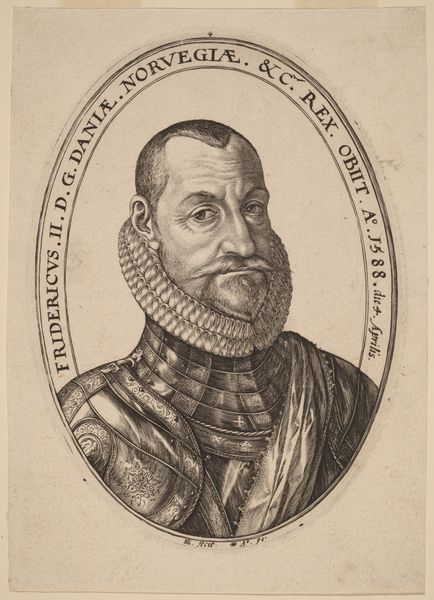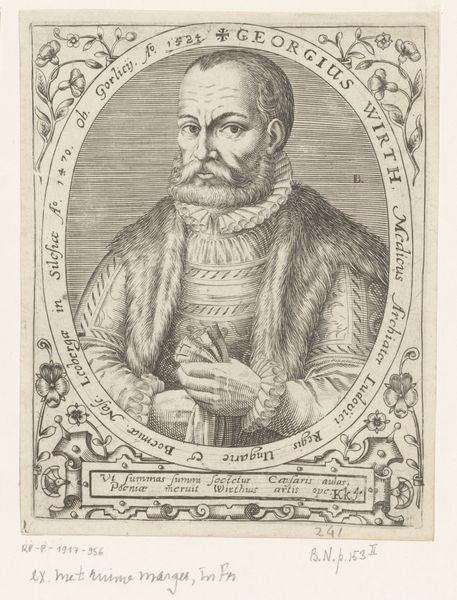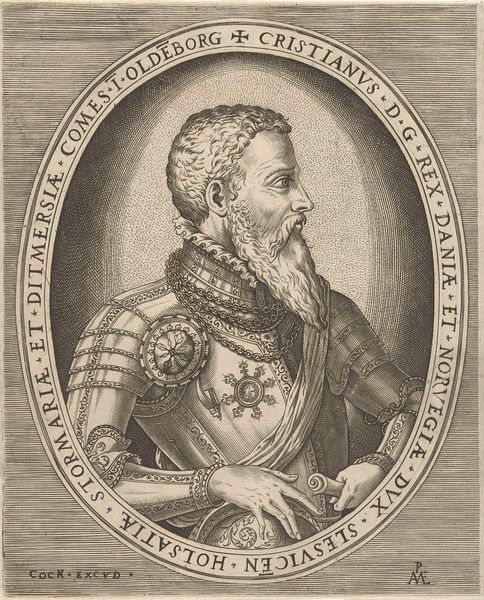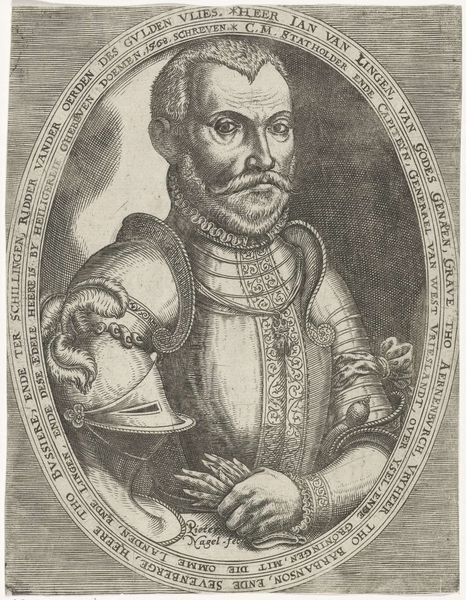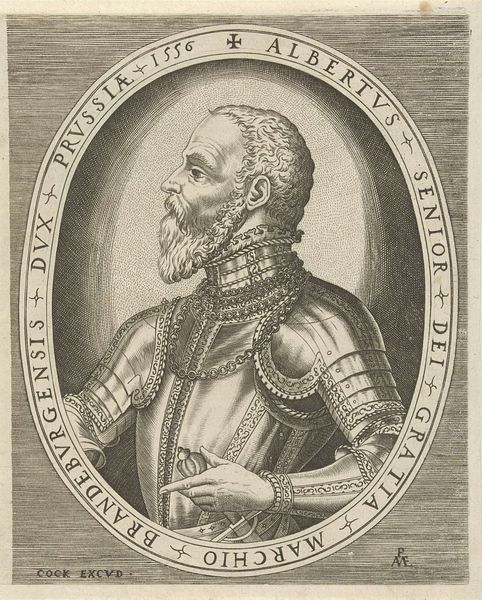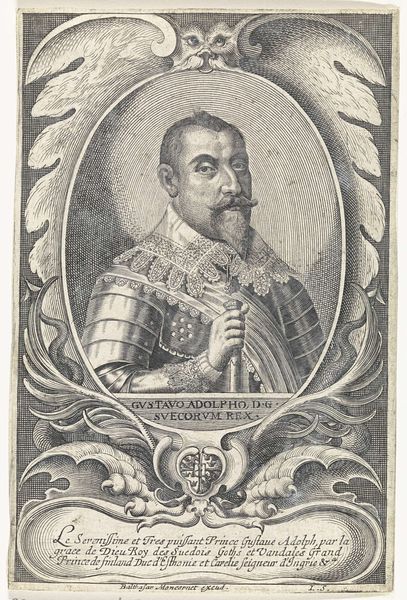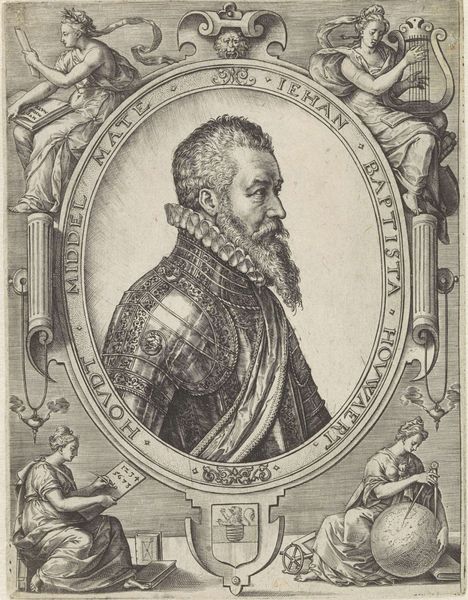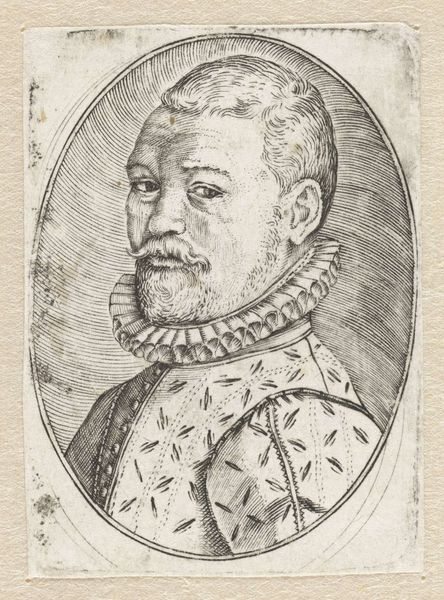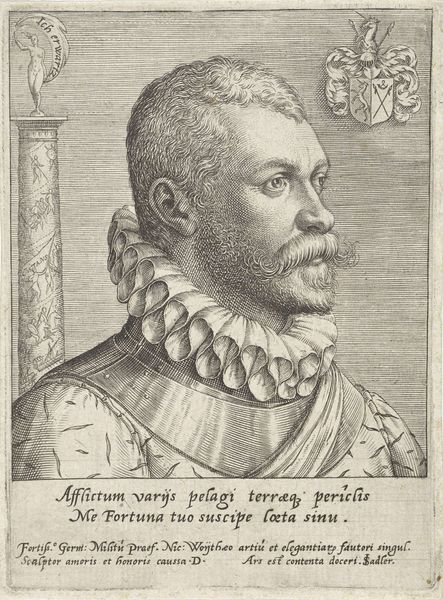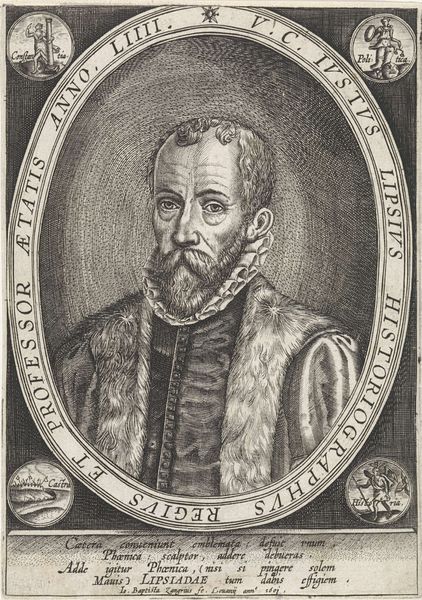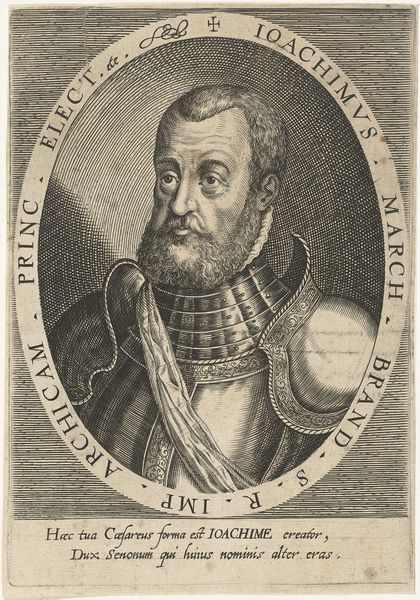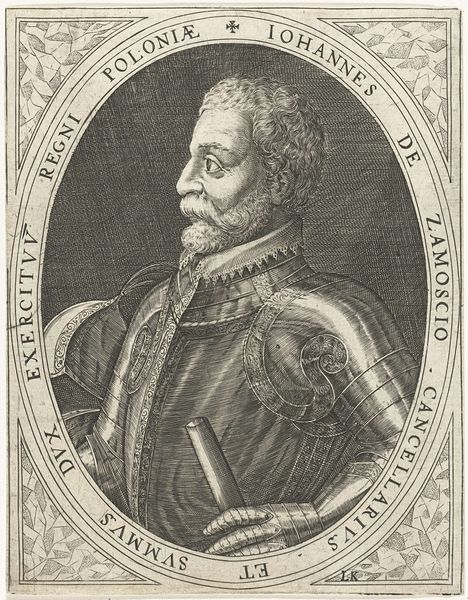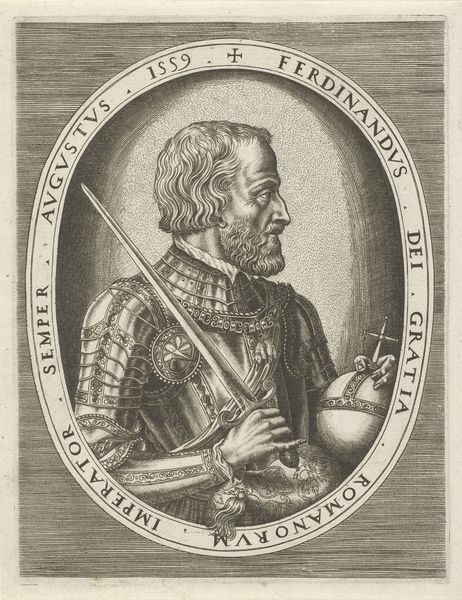
print, engraving
#
portrait
# print
#
old engraving style
#
11_renaissance
#
northern-renaissance
#
engraving
Dimensions: plate: 15.5 x 10.5 cm (6 1/8 x 4 1/8 in.) sheet: 25.7 x 16.3 cm (10 1/8 x 6 7/16 in.)
Copyright: National Gallery of Art: CC0 1.0
Curator: Allow me to introduce "Francoys de Scepeaulx," an engraving dating back to 1564, crafted by Pierre II Woeiriot de Bouzey. It's a striking portrait in the Northern Renaissance style. Editor: He looks…intense. Is it the armor? The gaze? He feels very serious. A face etched with, dare I say, experience? Curator: The armor certainly contributes to that air of authority. This isn’t just decoration; it signifies status and military prowess. Portraiture back then was a careful exercise in constructing a public image, you see. Editor: True, but I bet there was a person beneath the steel. Look at those eyes—they seem almost melancholic, which creates such an incredible tension with the rigid formality of the period and the plate. Curator: It's an interesting contrast, definitely a man of contradictions reflected in the artistic and historical context. “In Spem Contra Spem," which you see inscribed at the bottom, "hope against hope." That’s a heavy motto, hinting at struggles. Editor: Almost tragic, isn’t it? Despite all the grandeur, the motto creates a profound emotional subtext. And that ornate oval frame! Trapped in its own elaborate past, almost mocking that noble spirit we’re glimpsing through the eyes. Curator: It is quite elaborate, isn't it? And typical for the period. It's a deliberate decision to show his status, which is reinforced by that detailed coat-of-arms below. Woeiriot expertly combines those formal details to craft a complex commentary on the sitter and his societal standing. Editor: So more than meets the eye then. It's almost unsettling when you consider the delicate craftsmanship dedicated to illustrating a person who probably dealt with brutality as the order of the day. This artwork has a powerful effect, if you ask me. Curator: Yes, these portraits weren't mere representations. They told very constructed, political, and social stories. I’m grateful we have art like this today; a small window into lives so far removed from our own. Editor: Absolutely. And to remind us that beneath all the armor and formality, were individuals, probably not much different from us. Maybe that hint of melancholy I’m getting wasn’t too far off at all!
Comments
No comments
Be the first to comment and join the conversation on the ultimate creative platform.
